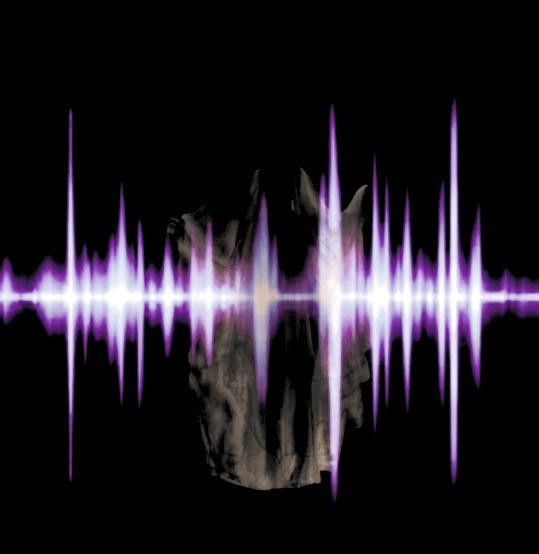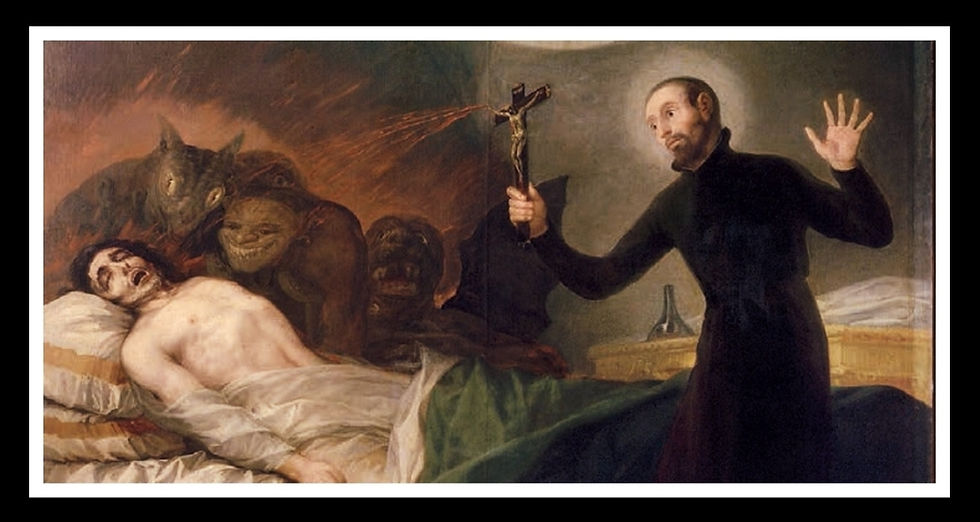Paranormal or Parasomnia? Phantoms in the night or something far less sinister?
- DRC Paranormal (KELLIE)

- Aug 6, 2019
- 6 min read
It wasn't until I was involved in the paranormal community that I researched sleep disorders and how they might relate to the paranormal. I learned a lot about my own sleep disturbances and garnered new information to use in the field. I was taught to debunk every possible cause before assuming something other worldly is haunting the client. I found myself mulling over medical articles, books and websites looking into many interesting sleep disorders scientifically known as Parasomnia.
Before I proceed I also feel it's important to note that I do believe in the paranormal and I've experienced my fair share in the paranormal field to make me a believer. As interesting as the possibility may be that something could be paranormal, debunking is still part of the job while investigating. This means checking for more than creaky doors and loose floorboards. It tasks us to ask the client about themselves, their religion, their lifestyle and even their sleep habits. It's important that investigators work to rule out other possibilities for their clients experiences before telling them that their home has become a haven for the afterlife.
Now let's take a look at some of the not so well known, alternatives to the paranormal that you or a client could be suffering from. Can parasomnia be a cause of unwanted night time disturbances?
Have you ever heard your name called out in the night? It had to be real right? After all, the sound was very real and you weren't quite asleep yet. The noise heard could be an eerie whisper that sends one shooting straight up in bed or maybe it was a loud and clear voice calling out a name? Whether it was a spirit or not, it's important to know that there are alternative possibilities.
Let's first take a look at Auditory hallucinations (Paracusia). Auditory hallucinations occur when you start to fall asleep or during the beginning stages of sleep. These dreams can completely trick you into believing you're hearing things. Typically, several minutes after our head hits the pillow our brain goes into a neutral state referred to as REM (Rapid Eye Movement). It's during this time that the brain can start the dream process. It's also within this sleep stage that we can experience sounds, and voices that seem very real when it's actually caused by our brain relaxing and slipping into a dream state. These hallucinations have also been scientifically linked to schizophrenia, psychosis, stress, anxiety, medications, withdrawal from medications and fears.
Moving on, studies have reported a rare sleep disorder that's experienced as sounds of gun shots, crashes, bangs and explosions. These hallucinations sound alarmingly loud and are so terrifying that they've sent people flying out of bed with their hearts racing and many sufferers have woken their partners in a panic. Upon looking outside or around the house for another source for the noise(s) these people come up empty handed. What made these people believe a car crashed outside or a bomb went off? Well it turns out there's an uncommon but very real sleep disorder called Exploding Head Syndrome (EHS). Scientists are still studying this disorder but have found a few possible causes. Causes could be the result of tiny seizures in the brain, shifting bones in the middle ear or rarely a brain bleed. This disturbance also has been connected with stress, anxiety, lack of sleep, medication symptoms, Parkinson’s disease and alcohol abuse.
There are other sleep disturbances that can occur during the REM state that can leave you feeling very scared and shaken. It's experienced when we're on the verge of entering dreamland and suddenly feel like were falling causing our stomach to feel like it drops. Usually this jerks us awake, our heart racing. Upon waking it's realized that it was just a dream. This is what's referred to as a Hypnogogic hallucination (HGH).
These dreams come in many forms and typically occur when we're trying to fall asleep. They can be smells, feelings of being touched, choked and can include feelings of threat, disaster or doom that cause us to suddenly jerk awake. Some people have opened their eyes and reported seeing things or people they had dreamt of. These visions momentarily appear at the bedside in full form. With a few blinks of the eyes these images slowly fade away. These dreams can be terrifying and thankfully for most only happen once or twice in a lifetime. The frequency by which they occur is also based on a persons sleep history. People with insomnia and other sleep disorders are reported as having these dreams more frequently.
Similar dream hallucinations may also occur as Hypnopompic dreams (HPH). Hypnopompic dreams are very much the same as Hypnogogic dreams except they occur upon waking. These two types of dreams can also give the host a kinetic feeling like falling, flying, levitating, being grabbed or chased. Some who experience these types of dreams may mistake them for paranormal experiences as they visually and physically feel extremely real. It's as if there is actually someone or something in the room with them. Older people and predominately women seem to experience these types of dreams most often. Alcohol use, medications, history of narcolepsy and mental illness can also increase the chances of this type of experience.

Hopefully, you never wake to find that you're body is totally immobilized. The feeling is absolutely terrifying and may include the inability to talk or scream out. It may include visual hallucinations of something or someone holding us down. The eyes of the sufferer may be open but the body is in a self induced catatonic state which perhaps happens to keep us from acting out in our dreams. It's when our brain starts to enter the state of wakefulness while our body is still in the catatonic state that Sleep Paralysis can occur. This disorder goes hand in hand with another sleep disturbance commonly known as Night Terrors. During night terrors the sufferer is not typically frozen. The person's experiences can be strange or terrifying images at their bedside. It's a commonly reported sleep experience amongst adolescents. Sleep paralysis and night terrors can also be caused by insomnia, stress, narcolepsy, medications and panic disorders.

Certain sleep disorders can affect different age groups. Just like night terrors are common in children there is also a sleep disturbance most commonly associated with the elderly. An elderly person awakes at night to see an object or person hovering near their bedside or when they wake from sleep. Charles-Bonnet syndrome (CBS) could be the culprit. It's slowly becoming a more recognized condition. It was a rarely diagnosed condition until recent years. It affects older people and people with macular degeneration. In past years the patients condition was often misdiagnosed as Alzheimer’s or dementia. It's more likely to be accurately diagnosed by an ophthalmologist before a general physician. The person experiencing CBS doesn't have any other psychological disturbances other than momentarily seeing objects, people or things that aren't there. Eventually this syndrome may increase to affect the patient during daytime hours as well as morning and night. The cause of the hallucinations is said to be the brains way of transitioning as the loss of sight continues to grow. Elderly patients and family members that are unaware of CBS may mistakenly think that these optical disturbances are paranormal. There is no cure for CBS syndrome.
The last rare sleep disturbance I'd like to address is called Fatal Familial Insomnia (FFI). This happens when the person actually has a neurodegenerative brain disease caused be a genetic mutation that impairs the thalamus and wipes out the normal sleep-wake cycles. Since the person afflicted may not have a solid sleep cycle it can lead to some of the other sleep disturbances discussed earlier in this article. FFI eventually develops into the total inability to function leading to death. Luckily, only 1 in 10 million are affected by this disorder. And although its not linked to paranormal experiences the end result is terrifying in itself.
The next time you or a client hears a noise, voice or sees something in the night you may want to ask a few questions about sleep habits. It's helpful to the case if you can eliminate sleep disturbances as a factor. Doing so will make your investigative case that much stronger.
Sleep disorder sufferers can follow these simple steps to ensure an improved quality of sleep. Reduce the amount of artificial light your eyes are exposed to for a few hours before bed. This means no TV or electronic devices. This in combination with going to bed at the same time every night, sleeping in a comfortable distraction free area, and avoiding food and caffeine before sleep can help curtail sleep disturbances.
This article only begins to touch on the many different types of parasomnia. It does not act as a medical resource and is my brief representation of types of parasomnias that interested me. Research on all sleep disorders continues and the mystery of the brain has yet to be unraveled.
Disclaimer: Anyone suffering from frequent sleep disturbances should always consult with their physician and may benefit from a sleep study.
As always. We would love to hear your opinion on the article or your experience with sleep disturbances. Was your experience truly paranormal or was it? Comment below.
Sources:
https://www.helpguide.org/articles/sleep/sleep-disorders-and-problems.htm https://www.visionaware.org/info/your-eye-condition/guide-to-eye-conditions/charles-bonnet-syndrome/124 https://www.aao.org/eye-health/diseases/what-is-charles-bonnet-syndrome https://www.livescience.com/50876-sleep-paralysis.html https://www.webmd.com/sleep-disorders/guide/sleep-paralysis https://www.medicalnewstoday.com/articles/321070.php https://rarediseases.org/rare-diseases/fatal-familial-insomnia/




Comments